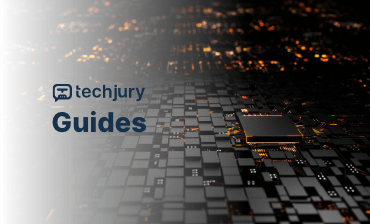The Digital Nervous System: Understanding IoT‘s Transformative Power
Imagine a world where every device speaks a universal language, where machines communicate seamlessly, anticipating needs before you even recognize them. This isn‘t science fiction—it‘s the current reality of the Internet of Things (IoT), a technological revolution quietly reshaping how humans interact with technology.
The Evolution of Connectivity
The journey of IoT is a fascinating narrative of human innovation. What began as simple networked computing in research laboratories has metamorphosed into a complex, intelligent ecosystem connecting billions of devices worldwide. From industrial sensors monitoring manufacturing processes to smart home devices adjusting your living environment, IoT has transcended technological boundaries.
Global Connectivity Landscape: A Numerical Perspective
In 2024, our world is more connected than ever before. Current data reveals a staggering technological proliferation that challenges traditional understanding of human-machine interaction. Approximately 29.4 billion devices are now interconnected, representing an extraordinary 18-22% year-over-year growth rate.
Regional Connectivity Dynamics
Different global regions demonstrate unique IoT adoption patterns. North America leads with an impressive 13.4 devices per capita, while Western Europe follows closely with 9.4 devices. The Asia-Pacific region emerges as a rapidly expanding market, characterized by aggressive technological integration and innovative implementation strategies.
Technological Architecture: Beyond Simple Connectivity
The backbone of IoT isn‘t just about connecting devices—it‘s about creating intelligent, responsive networks that can process, analyze, and act upon complex data streams in real-time.
Wireless Communication Frameworks
Modern IoT relies on sophisticated wireless technologies that go far beyond traditional networking:
Low-Power Wide Area Networks (LPWAN) represent a revolutionary approach to long-range communication. These networks enable sensors and devices to transmit data across vast distances while consuming minimal power—a critical consideration for large-scale industrial and agricultural monitoring systems.
Fifth-generation (5G) and emerging sixth-generation (6G) technologies are transforming connectivity paradigms. With ultra-low latency and massive bandwidth capabilities, these networks support mission-critical applications that demand instantaneous data transmission and processing.
Industry-Specific Transformations
Manufacturing: The Smart Factory Revolution
Manufacturing stands at the forefront of IoT integration. Approximately 35% of manufacturers now utilize automated data systems that provide unprecedented insights into production processes. Predictive maintenance algorithms can now anticipate equipment failures before they occur, reducing downtime and optimizing operational efficiency.
Healthcare: Precision and Personalization
In healthcare, IoT represents nothing short of a technological renaissance. Remote patient monitoring systems, intelligent medical device management, and predictive diagnostic technologies are revolutionizing how medical professionals deliver care.
By 2025, healthcare is projected to constitute 30% of the global IoT market, indicating massive potential for technological innovation and patient-centric solutions.
As connectivity increases, so do potential vulnerabilities. Current research indicates that 60% of IoT devices contain potential security weaknesses, creating a complex challenge for technology professionals and organizations.
Emerging Mitigation Strategies
Advanced encryption protocols, zero-trust security architectures, and AI-powered threat detection mechanisms are becoming essential components of robust IoT security frameworks. The goal is no longer just preventing breaches but creating adaptive, intelligent defense systems.
Future Technological Convergence
The next frontier of IoT isn‘t about individual devices but creating interconnected, intelligent ecosystems. Emerging integration points with artificial intelligence, quantum computing, blockchain technology, and advanced sensor networks promise to redefine technological possibilities.
Predictive Technology Roadmap
By 2025, global data volume is projected to reach an astonishing 79.4 zettabytes. This exponential growth represents more than numerical expansion—it signifies a fundamental transformation in how humans understand and interact with technological systems.
Strategic Implementation Recommendations
For businesses and technology professionals, successful IoT integration requires a holistic, forward-thinking approach:
- Develop comprehensive, adaptable IoT strategies
- Invest in robust, scalable security infrastructures
- Prioritize interoperability and standardization
- Foster continuous learning and technological adaptability
Conclusion: Reimagining Human-Technology Interaction
The Internet of Things represents more than technological innovation—it‘s a profound reimagining of human potential. As devices become increasingly intelligent and interconnected, we‘re witnessing the emergence of a global, adaptive digital ecosystem.
The future isn‘t just connected; it‘s intelligently responsive, predictive, and fundamentally transformative.
